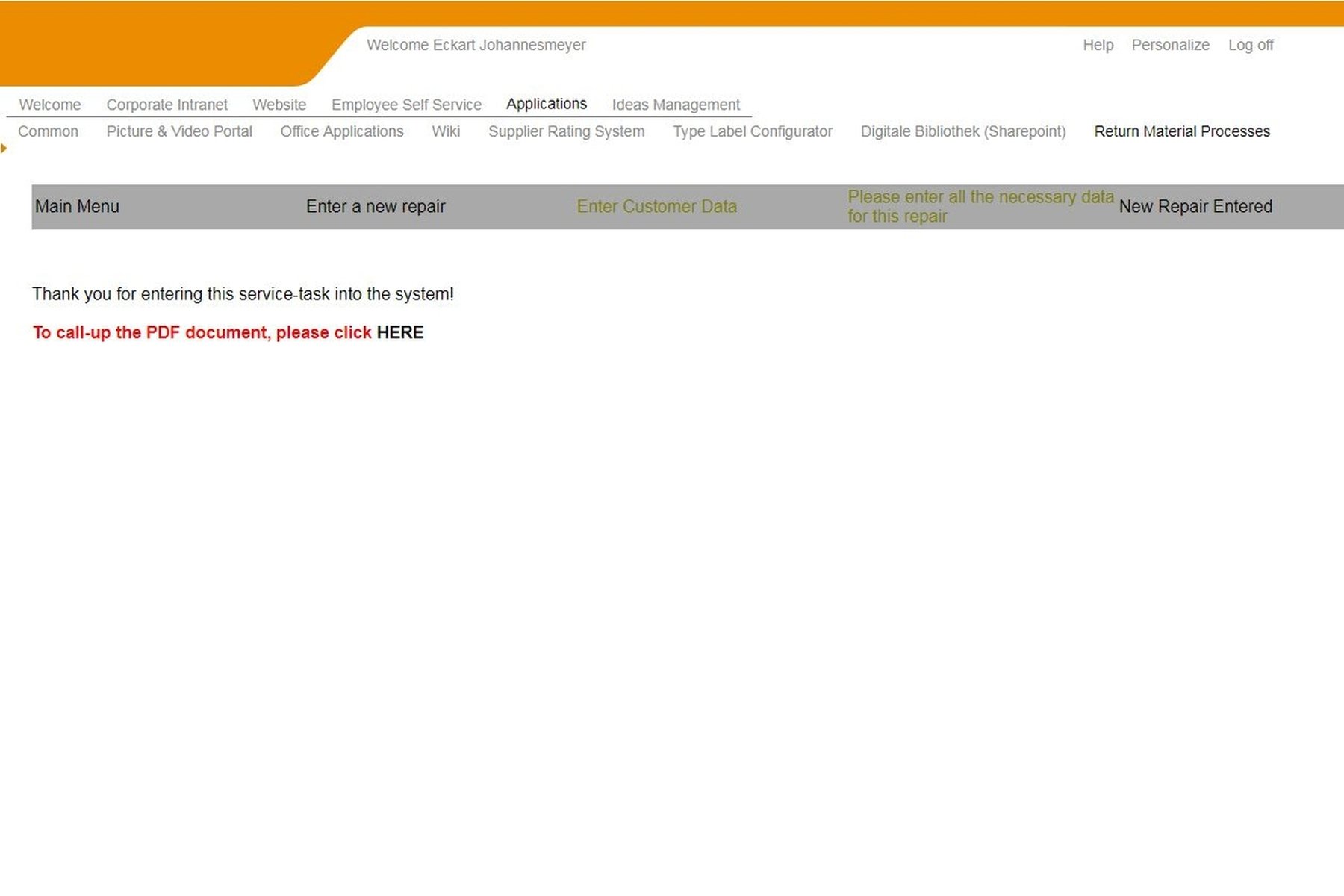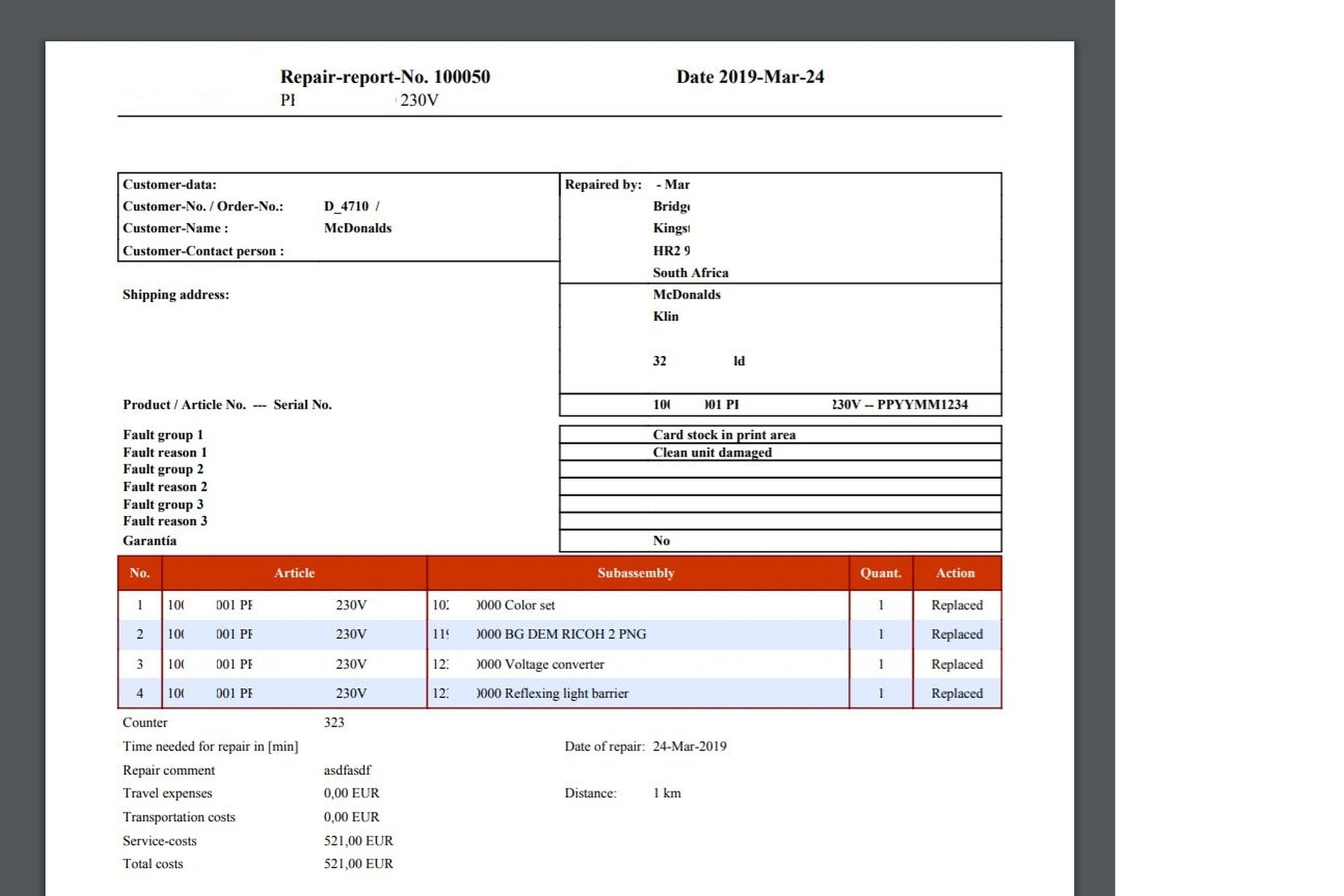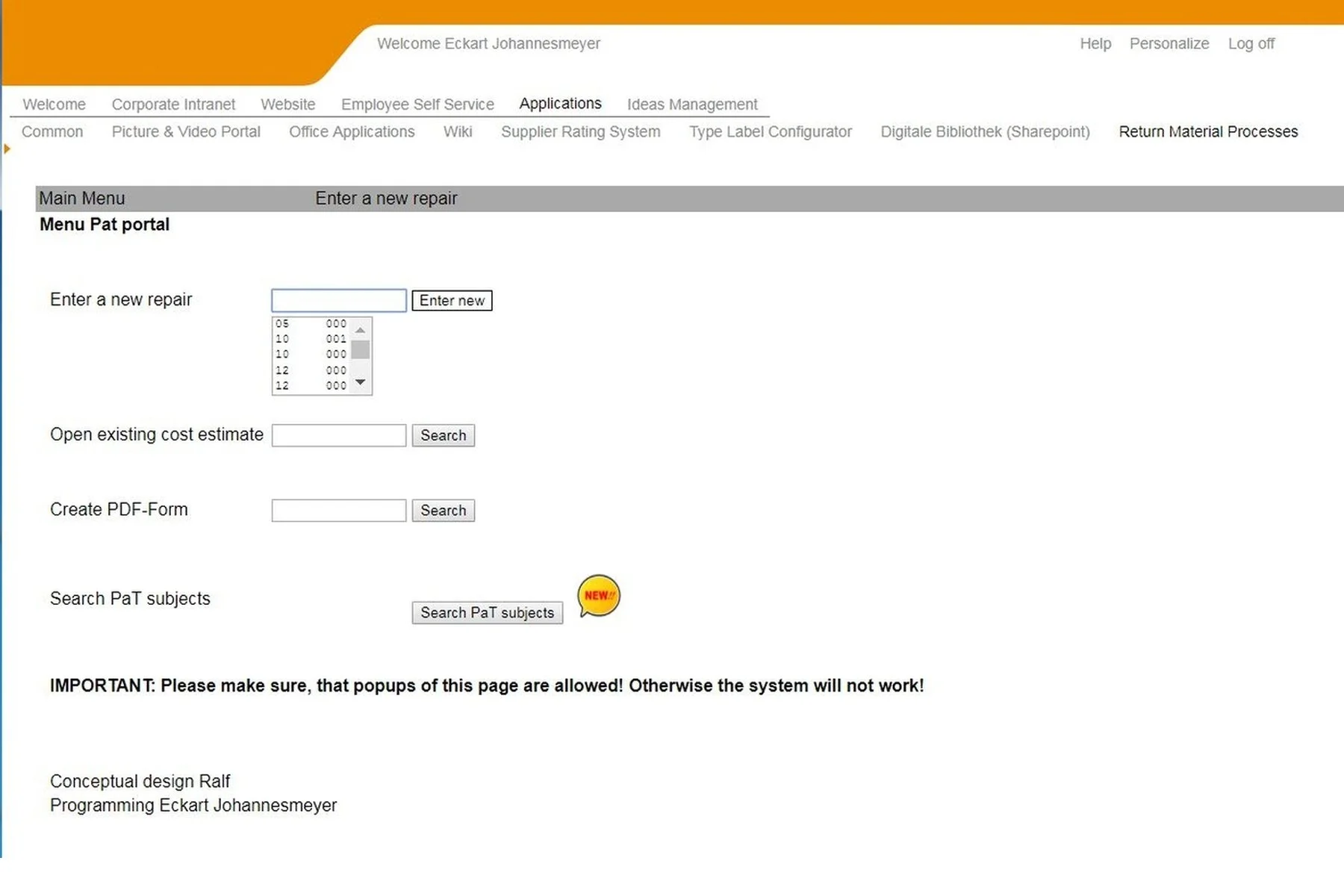Service documentation for Printer & tools
Problem definition:
As part of the worldwide distribution of special printers for marking elements and wire processing machines, central documentation was required that also included the departments involved in the service process in the information flow. This IT solution for the coordination and processing of services with the help of 46 decentralized partners or group companies was intended to help establish a decentralized service structure for the provision of service and repair services.
Situation before:
No alternative solution available.
Situation afterwards:
The original version was put into operation in Spring 2010 and the following functions were implemented:
1. Repair and service report generation
2. Preparation of cost estimates
3. Automatic generation of complaints in the complaint system if the device was within the warranty period
4. Automatic subsequent delivery of used components to the service hubs.
5. Mapping of different service levels for service hubs, which determined the possible scope of service activities per technician
For each device (printer or machine) that could appear in the decentralized service hubs for repair or maintenance, a service parts list was maintained that contained the individual spare parts or assemblies. Standard work steps that were necessary at the beginning and at the end could also be listed for each device. In addition to the activities for a service component, easy to-understand component designations were also maintained in the technician's native language. In addition to the component-specific costs, different service times were assigned to the units depending on the technician's set level of experience. The costs to be charged could be controlled for each service hub (flat rate or factor for charging price).
It was also possible to define all-inclusive packages that included a certain range of service items. At the beginning, the service history for each appliance was shown to the technician according to the serial number.
The data recorded in this way could be used to assess the service life of certain components, etc. The spare parts supply of the service hubs was also carried out by means of automated subsequent delivery information to the scheduling department. The service hub managers were able to carry out a range of analyses in individual Excel pivot reports.
Over the years, the system has been adapted to the changing process structure from various perspectives.

Process starts with the entry of the Article-No. to be serviced. Each product might have a different type of Serial-No. to be analyzed

Dependen on the typ of product, the Serial-No. has to follow a certain coding. If no already recorded the customer can be connected

On top the recorded service-history of this product is shown. Below an available service-package can be seleted or a selection among all serviceable components can be made. At the bottom individual entries can be mde for this service task.

The recorded service task will be send out as PDF but the PDF can be view on request as well

A sample PDF-report
